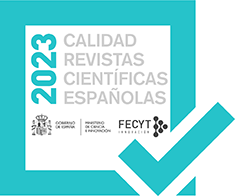Title: “Understanding the legal development and challenges regarding underwater noise pollution in Spain and Norway”
Título: “Comprendiendo el desarrollo jurídico y retos de la contaminación acústica subacuática en España y Noruega”
Author: Esteban Morelle Hungría, PhD in Law, environmental law and sustainability. Collaborator researcher in Public Law at University of Balearic Islands, esteban.morelle@uib.es ORCID: 0000-0001-5149-1792
Autor: Esteban Morelle Hungría, Doctor en Derecho, Derecho ambiental y sostenibilidad. Investigador colaborador en Derecho público en la Universitat de les Illes Balears, esteban.morelle@uib.es ORCID: 0000-0001-5149-1792
Fecha de recepción: 24/08/2020
Fecha de aceptación: 02/10/2020
Doi: https://doi.org/10.56398/ajacieda.00162
Abstract: Noise is one of most important pollution that affects to human health, but in aquatic ecosystem its impact is higher than terrestrial. Noise is included in environmental acts only by sectorial mechanism but, in 2010, this vision changed. Ecosystem approach was incorporated in Spanish acts with first legal instrument for protecting from holistic perspective internal seas. From the European Union built news regulations about marine policies from ecosystem approach, with two essentials acts, Maritime Spatial Planning and Marine Strategies. In this paper, we analyse these mechanisms in Spain and Norway; we make a descriptive research about the legal mechanism for managing the underwater noise pollution generates by human activities. And we compare different mechanism to use with priority in these countries and we try to answer that if it is necessary to incorporate another instrument, such as an underwater noise licence, for any anthropogenic activity with to noise limits.
Resumen: El ruido es una de los contaminantes más importantes que afecta la salud humana, pero en el ecosistema acuático su impacto es mayor que el terrestre. El ruido se incluyó en la normativa ambiental mediante instrumentos sectoriales, pero, en 2010, esta visión cambió. El enfoque ecosistémico se incorporó en el sistema de protección ambiental español con la primera normativa en tener en cuenta una perspectiva holística de protección del medio marino. Desde la Unión Europea, se elaboraron nuevas regulaciones sobre políticas marinas desde este enfoque ecosistémico, con dos mecanismos esenciales, la Planificación Marítima Espacial y las Estrategias Marinas. En este artículo, analizamos estos mecanismos en España y Noruega; Realizamos una investigación descriptiva sobre el mecanismo jurídico para gestionar la contaminación acústica subacuática generada por las actividades humanas. Y comparamos diferentes mecanismos que se utilizan en estos países e intentamos responder si es necesario incorporar otros instrumentos, como pueden ser licencias o valores límite.
Keywords: Underwater noise pollution. Marine Strategies. Maritime Spatial Planning. Ecosystem approach.
Palabras clave: Contaminación acústica subacuática. Estrategias Marinas. Planificación Espacial Marítima. Enfoque ecosistémico.
Index:
1. Introduction
2. Methodology
3. Understanding the ecosystem approach
4. Legal development of underwater noise pollution
4.1. Spain
4.2. Norway
5. Conclusions
6. References
Índice:
1. Introducción
2. Metodología
3. Comprendiendo el enfoque ecosistemático
4. Desarrollo jurídico de la contaminación acústica subacuática
4.1. España
4.2. Noruega
5. Conclusiones
6. Referencias
Documento completo: Understanding the legal development and challenges regarding underwater noise pollution in Spain and Norway.



